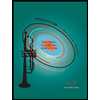Starbucks has a large, global supply chain that must efficiently supply over 17,000 stores. Although the stores might appear to be very similar, they are actually very different. Depending on the location of the store, its size, and the profile of the customers served, Starbucks management configures the store offerings to take maximum advantage of the space available and customer preferences. Starbucks’ actual distribution system is much more complex, but for the purpose of our exercise let’s focus on a single item that is currently distributed through five distribution centers in the United States. Our item is a logo-branded coffeemaker that is sold at some of the larger retail stores. The coffeemaker has been a steady seller over the years due to its reliability and rugged construction. Starbucks does not consider this a seasonal product, but there is some variability in demand. Demand for the product over the past 13 weeks is shown in the following table. (week −1 is the week before week 1 in the table, −2 is two weeks before week 1, etc.). Management would like you to experiment with some forecasting models to determine what should be used in a new system to be implemented. The new system is programmed to use one of two forecasting models: simple moving average or exponential smoothing. WEEK −5 −4 −3 −2 −1 1 2 3 4 5 6 7 8 9 10 11 12 13 Atlanta 35 34 33 58 32 32 46 35 33 54 30 20 58 46 35 26 57 42 Boston 58 29 49 45 33 34 33 45 42 46 49 55 21 64 45 33 43 53 Chicago 53 24 62 40 40 45 33 26 50 47 65 65 30 25 95 34 44 48 Dallas 36 30 34 55 40 28 28 35 38 47 60 68 62 45 40 35 46 43 LA 42 42 46 38 36 36 42 44 46 46 66 42 35 39 42 45 50 50 Total 224 159 224 236 181 175 182 185 209 240 270 250 206 219 257 173 240 236 a. Consider using a simple moving average model. Experiment with models using five weeks’ and three weeks’ past data. (Round your answers to 2 decimal places.) 3-week MA 5-week MA b. Evaluate the forecasts that would have been made over the 13 weeks using the overall (at the end of the 13 weeks) mean absolute deviation, mean absolute percent error, and tracking signal as criteria. (Negative values should be indicated by a minus sign. Round all answers to 2 decimal places. Enter "MAPE" answers as a percentage rounded to 2 decimal places.)
Critical Path Method
The critical path is the longest succession of tasks that has to be successfully completed to conclude a project entirely. The tasks involved in the sequence are called critical activities, as any task getting delayed will result in the whole project getting delayed. To determine the time duration of a project, the critical path has to be identified. The critical path method or CPM is used by project managers to evaluate the least amount of time required to finish each task with the least amount of delay.
Cost Analysis
The entire idea of cost of production or definition of production cost is applied corresponding or we can say that it is related to investment or money cost. Money cost or investment refers to any money expenditure which the firm or supplier or producer undertakes in purchasing or hiring factor of production or factor services.
Inventory Management
Inventory management is the process or system of handling all the goods that an organization owns. In simpler terms, inventory management deals with how a company orders, stores, and uses its goods.
Project Management
Project Management is all about management and optimum utilization of the resources in the best possible manner to develop the software as per the requirement of the client. Here the Project refers to the development of software to meet the end objective of the client by providing the required product or service within a specified Period of time and ensuring high quality. This can be done by managing all the available resources. In short, it can be defined as an application of knowledge, skills, tools, and techniques to meet the objective of the Project. It is the duty of a Project Manager to achieve the objective of the Project as per the specifications given by the client.
Starbucks has a large, global supply chain that must efficiently supply over 17,000 stores. Although the stores might appear to be very similar, they are actually very different. Depending on the location of the store, its size, and the profile of the customers served, Starbucks management configures the store offerings to take maximum advantage of the space available and customer preferences.
Starbucks’ actual distribution system is much more complex, but for the purpose of our exercise let’s focus on a single item that is currently distributed through five distribution centers in the United States. Our item is a logo-branded coffeemaker that is sold at some of the larger retail stores. The coffeemaker has been a steady seller over the years due to its reliability and rugged construction. Starbucks does not consider this a seasonal product, but there is some variability in demand. Demand for the product over the past 13 weeks is shown in the following table. (week −1 is the week before week 1 in the table, −2 is two weeks before week 1, etc.).
Management would like you to experiment with some
| WEEK | −5 | −4 | −3 | −2 | −1 | 1 | 2 | 3 | 4 | 5 | 6 | 7 | 8 | 9 | 10 | 11 | 12 | 13 |
| Atlanta | 35 | 34 | 33 | 58 | 32 | 32 | 46 | 35 | 33 | 54 | 30 | 20 | 58 | 46 | 35 | 26 | 57 | 42 |
| Boston | 58 | 29 | 49 | 45 | 33 | 34 | 33 | 45 | 42 | 46 | 49 | 55 | 21 | 64 | 45 | 33 | 43 | 53 |
| Chicago | 53 | 24 | 62 | 40 | 40 | 45 | 33 | 26 | 50 | 47 | 65 | 65 | 30 | 25 | 95 | 34 | 44 | 48 |
| Dallas | 36 | 30 | 34 | 55 | 40 | 28 | 28 | 35 | 38 | 47 | 60 | 68 | 62 | 45 | 40 | 35 | 46 | 43 |
| LA | 42 | 42 | 46 | 38 | 36 | 36 | 42 | 44 | 46 | 46 | 66 | 42 | 35 | 39 | 42 | 45 | 50 | 50 |
| Total | 224 | 159 | 224 | 236 | 181 | 175 | 182 | 185 | 209 | 240 | 270 | 250 | 206 | 219 | 257 | 173 | 240 | 236 |
a. Consider using a simple moving average model. Experiment with models using five weeks’ and three weeks’ past data. (Round your answers to 2 decimal places.)
3-week MA
5-week MA
b. Evaluate the forecasts that would have been made over the 13 weeks using the overall (at the end of the 13 weeks) mean absolute deviation, mean absolute percent error, and tracking signal as criteria. (Negative values should be indicated by a minus sign. Round all answers to 2 decimal places. Enter "MAPE" answers as a percentage rounded to 2 decimal places.)
Trending now
This is a popular solution!
Step by step
Solved in 2 steps with 5 images









